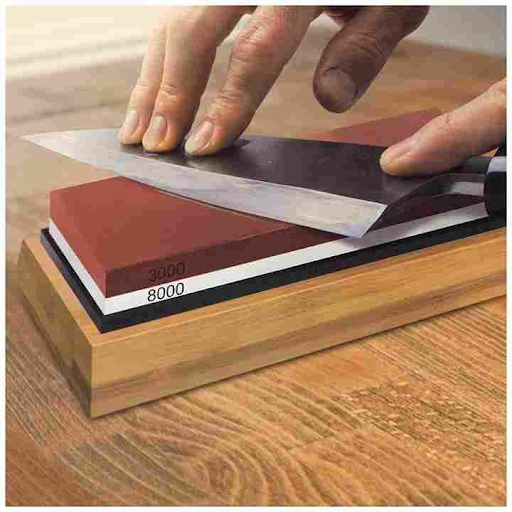When it comes to kitchen maintenance, having the right tools is essential, and one of the most critical tools for any chef or home cook is a high-quality whetstone. Whetstones are sharpening stones that help maintain and restore the edge of knives, ensuring they perform efficiently in the kitchen. However, not all whetstones are suitable for every knife type. Understanding which whetstone to use for your knives can significantly enhance longevity and performance. This guide will explore how to select the best whetstones for different types of knives.
The Basics of Whetstones
Whetstones come in various materials, including natural, synthetic, and diamond stones. They are characterized by their grit levels, which dictate how coarse or fine the stone is. The grit scale ranges from coarse (around 200-600) for reshaping dull edges to fine (3000 and above) for polishing and honing blades. Understanding this grit system is crucial for choosing the right whetstone for your knives.
Grit Levels Explained
- Coarse Grit (200-600): These whetstones are ideal for dull or damaged edges. They remove material quickly and are great for reshaping the edge.
- Medium Grit (800-2000): This grit level is suitable for standard sharpening tasks. It refines the edge and prepares it for fine-honing.
- Fine Grit (3000 and above): These stones are used for honing and polishing the blade, providing a razor-sharp finish.
Choosing the correct grit for your specific knife type will help you achieve optimal results in sharpening.
Chef’s Knives
Chef’s knives are a staple in any kitchen knife set. They are versatile tools for various tasks, such as chopping, slicing, and dicing. Given their frequent use, keeping them sharp is vital. A medium grit whetstone (1000-2000) is usually the best choice for chef’s knives. This grit level allows effective sharpening while refining the edge to maintain functionality.
A chef’s knife typically has a blade length of 8 to 10 inches, requiring a balance between sharpness and edge retention. Using a medium-grit whetstone helps preserve the blade’s integrity while ensuring it remains sharp enough for daily tasks.
Paring Knives
Paring knives are small, generally measuring around 3 to 4 inches long, and designed for intricate tasks like peeling and trimming. Maintaining a sharp edge is crucial because precision is key when using a paring knife. A fine-grit whetstone (3000-8000) is ideal for this type of knife.
Fine-grit whetstones allow you to hone the edge effectively, ensuring the blade can perform delicate tasks without slipping or tearing the food. The small size of the paring knife makes it essential to have a sharp edge that can easily handle intricate cuts.
Santoku Knives
The Santoku knife, popular in Japanese cooking, features a broad blade and is versatile for various cutting tasks. Unlike Western chef’s knives, Santoku knives tend to have thinner edges, making them particularly sensitive to dullness. For Santoku knives, a medium grit whetstone (1000-3000) is appropriate to maintain the knife’s unique characteristics.
Using a whetstone in this grit range allows you to sharpen the blade effectively while preserving the knife’s delicate design. Applying the right technique when sharpening is essential to avoid altering the blade’s geometry.
Boning Knives
Boning knives are designed to remove bones from meat and often feature a flexible blade for precise cuts. A sharp edge is critical for effectively using a boning knife, and as such, a medium to fine grit whetstone (1000-3000) is recommended.
Using a whetstone with this grit range helps maintain a sharp edge, which is essential for separating meat from bone with precision. A well-maintained boning knife ensures you achieve clean cuts without tearing the meat.
Conclusion
Selecting the right whetstone for your specific knife set types is essential for maintaining their performance and extending lifespan. Each type of knife has unique characteristics that dictate the appropriate sharpening method. By understanding the differences in grit levels and how they apply to various knives, you can ensure that your kitchen tools remain in optimal condition.







